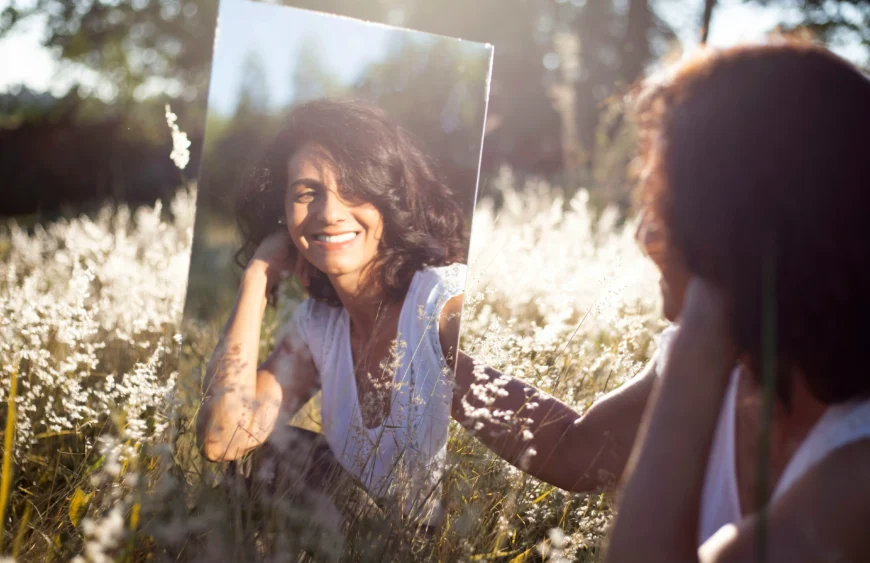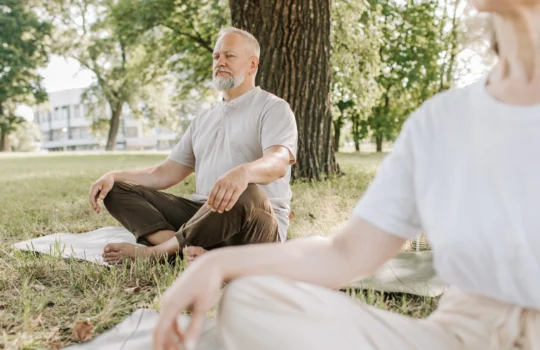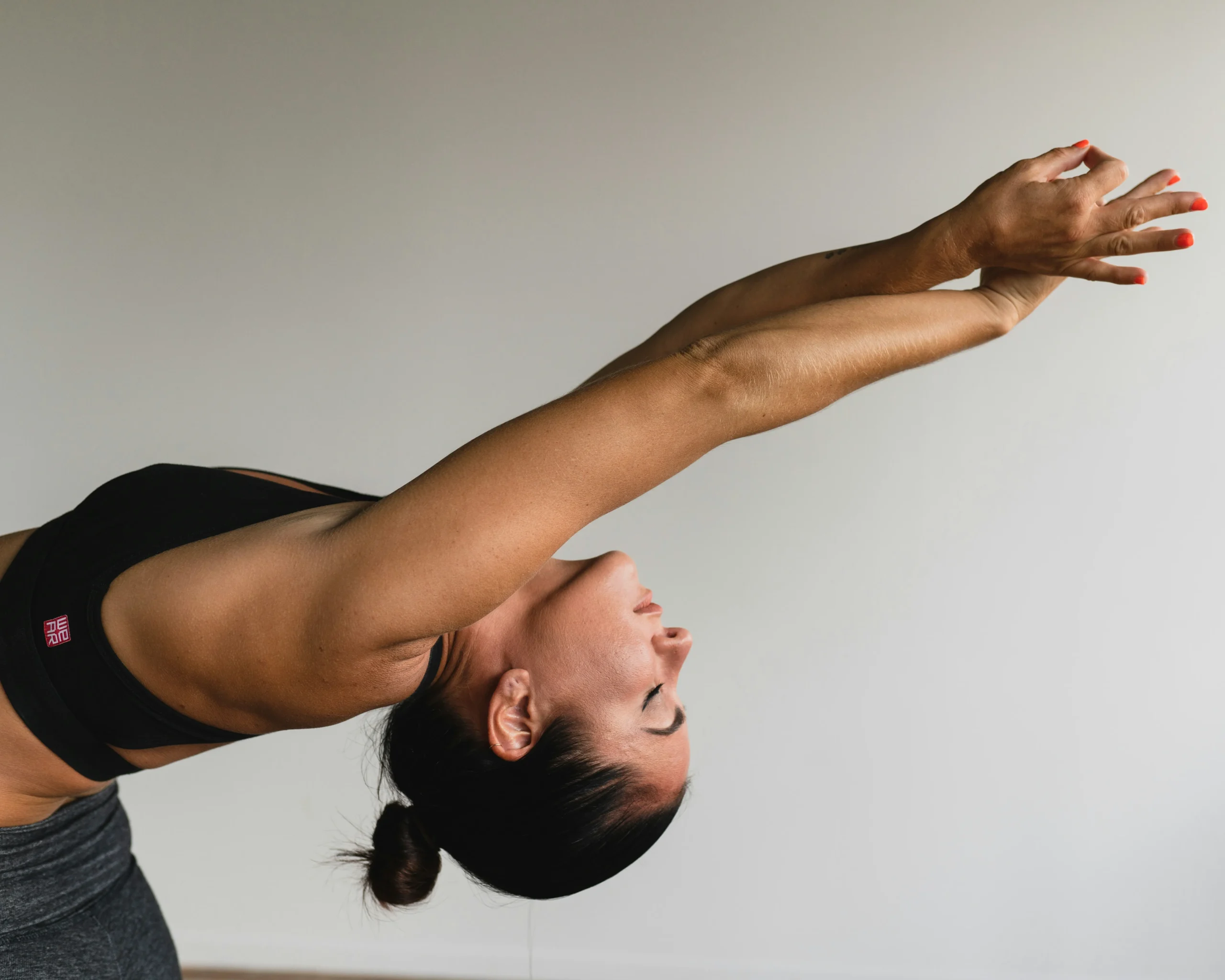Table of Contents
Hey there! Ever felt like you’re just one deep breath away from discovering a whole new you? Well, you might just be! Yoga isn’t just about twisting yourself into a pretzel (though that’s pretty cool too); it’s about unlocking a level of strength and zen you probably didn’t know you had. Did you know a whopping 87.1% of yogis report feeling stronger after rolling out their mats? And get this: 86.2% say yoga has boosted their mental health big time.
Imagine turning your life into the best possible remix of health, happiness, and flexibility. Yoga is like your personal life coach, but way cheaper and you don’t have to share your smoothie with anyone. Whether you’re looking to conquer mountains or just the mountain of laundry at home, yoga gives you the tools to tackle it all with a smile (and maybe even a warrior pose).
I started my yoga journey in the tiniest living room you’ve ever seen, armed with just a cheap yoga mat and a YouTube video. Fast forward through many (many!) awkward poses, and not only can I touch my toes without groaning, but I also feel like a zen master (most days). If I can find my inner peace between a coffee table and a couch, you can find yours anywhere!
So, if you’re ready to meet the best version of yourself, stick around. Yoga might just be the key to that inner transformation you’ve been searching for. And trust me, it’s as awesome as it sounds. Let’s dive in and stretch our way to a new, improved us!
Why Yoga? Understanding Its Unique Power
More than Just Fitness: A Holistic Approach
So, what’s the big deal with yoga anyway? Sure, it’s great for your Insta feed, but there’s way more to it than just nailing a cool pose. Yoga is a full-package deal—it’s about aligning your body, mind, and spirit. Unlike hitting the gym for a sweaty workout, yoga brings a holistic approach to fitness. It’s about building strength, sure, but also about achieving balance and inner calm. It’s like getting a mental cleanse and a physical workout all in one!
Science Speaks: The Proven Benefits of Yoga
And it’s not just yoga enthusiasts raving about these benefits—the science backs it up too. Studies have shown that yoga can lower blood pressure, improve symptoms of anxiety and depression, and even boost your brain function. Think of it as your body’s own tune-up kit, making sure everything’s running smoothly under the hood.
When I first stepped onto a yoga mat, I was a total skeptic. I thought, “How much can this really help?” But after just a few weeks, I noticed changes. My back pain from hunching over a desk all day? Gone. That constant feeling of being overwhelmed? Managed. And that’s just scratching the surface.
Yoga isn’t just about stretching your muscles; it’s about stretching your mind’s capabilities and your emotional resilience. Whether you’re in it to enhance your physical flexibility or to find a mental escape from your hectic day-to-day, yoga has something unique to offer. And once you start reaping these benefits, there’s just no going back! So, why not roll out a mat and see where yoga can take you? Your ‘new you’ might just be a sun salutation away.
The Journey to the ‘New You’: How Yoga Facilitates Change
Building Physical Strength and Flexibility
One of the most visible benefits of yoga? How it sculpts and tones your body. But it’s not all about the aesthetics—yoga builds a type of strength that’s sustainable and balanced. Every pose and sequence is designed to reinforce the muscles around your spine, the very core of your body, which is essential for both everyday tasks and more intense physical activities. Over time, these movements make you stronger and more flexible, not just in body but in how you approach challenges off the mat as well.
When I first tried the Crow pose, I was sure it was impossible. I mean, balancing your entire body on your hands? Really? But with patience and practice, not only did I nail the pose, I also learned a vital life lesson — persistence pays off, and barriers are often more mental than physical.
Enhancing Mental Clarity and Peace
Now let’s talk about the mental makeover yoga offers. It’s like hitting the refresh button on your brain. Each session helps you clear out the mental clutter, offering a space to breathe away the stresses of daily life. Through focused breathing exercises and meditation practices, yoga helps you cultivate a mindset where challenges seem more like puzzles to solve rather than insurmountable problems.
Remember the statistic we talked about earlier? That 86.2% of yogis noticed a positive impact on their mental health? I’m definitely one of them. Yoga has been my go-to for managing anxiety. It’s not just about the quiet moments on the mat; it’s about how those moments change the way you see and interact with the world. Feeling overwhelmed by a looming deadline? A few minutes of mindful breathing can bring the world back into focus.
Harnessing the Power of Consistent Practice
Consistency is key in any transformation journey, and yoga is no exception. The more regularly you practice, the quicker you’ll notice changes. It’s not about perfection; it’s about progression. Each time you step onto your mat, you’re one step closer to the ‘New You.’ It’s a process of evolution, where small daily changes lead to stunning long-term results.
Starting a regular yoga practice helped me transform not just physically but also mentally. I began to approach life with a calmer, more centered perspective. It’s amazing how the principles of balance and harmony in yoga can spill over into every aspect of life, helping to smooth out the rough edges both internally and externally.
So, are you ready to start your journey? Roll out your mat, and let’s begin this transformative adventure together. Yoga isn’t just about changing the way you look; it’s about changing the way you live, breathe, and interact with the world. The ‘New You’ is waiting, and the path starts here.
Real Stories of Transformation
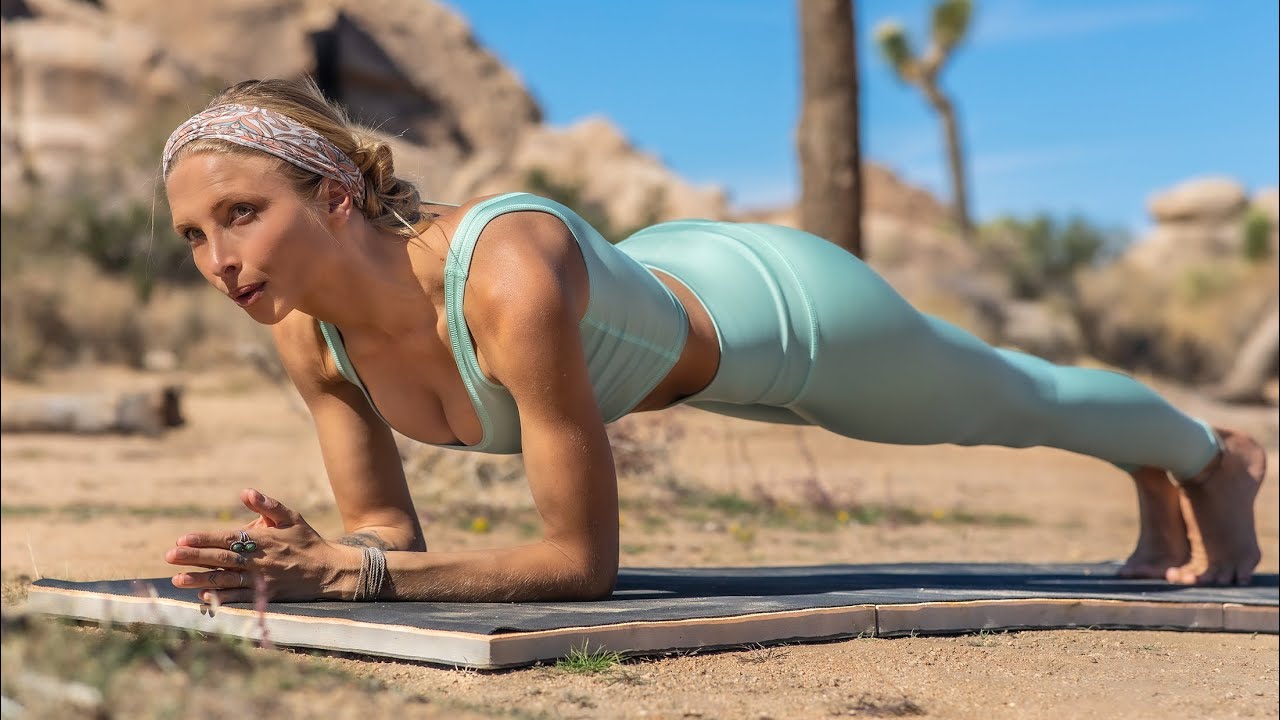
Before and After: Yogis Share Their Experiences
Yoga doesn’t just change bodies; it changes lives. Across the globe, countless individuals have turned to yoga as a source of strength, healing, and transformation. Take Sarah, for example. After a stressful career in tech, she found herself grappling with severe anxiety. Yoga wasn’t just a workout for her; it became a lifeline. Six months into her practice, not only had her anxiety levels plummeted, but her entire outlook on life had shifted. She says, “Yoga taught me not just to survive, but to thrive.”
Then there’s Michael, a retired veteran struggling with chronic back pain and the emotional scars of military service. Yoga opened a door he didn’t even know was there. Physically, he gained mobility that doctors told him he’d never recover. Emotionally, he found a peace that had eluded him for years. He shares, “Yoga helped me reconnect with myself and, surprisingly, with others around me. It’s like I got a second chance at life.”
Picture This: Visuals of Progress
Visual testimonials can be just as powerful as stories. Imagine scrolling through a feed of ‘before and after’ yoga journey photos. These aren’t just transformations of posture and flexibility; they’re snapshots of increased confidence, vitality, and peace. For instance, Jenna, a yoga instructor, regularly shares her students’ progress on social media. “It’s not just about the deeper poses they can hold,” she explains, “but the smiles that are a little brighter because their minds are a little lighter.”
One particularly striking series shows Clara, who began practicing yoga during a bout with depression. Her first pictures show a timid, unsure participant, shoulders slumped and eyes downcast. Fast forward a year, and the difference is stark. Her stance is confident, her eyes sparkle with vitality, and her smile says it all. She reflects, “Yoga didn’t just help me find my smile; it helped me rebuild my life around joy and resilience.”
Key Yoga Practices for Self-Transformation
Starting Simple: Yoga Poses for Beginners
Diving into yoga doesn’t require you to be super flexible or incredibly fit from the get-go. It’s all about starting where you are and growing from there. Here are a few beginner-friendly poses that can kickstart your journey to self-transformation:
- Mountain Pose (Tadasana): This might seem like just standing, but it’s the foundation for all standing poses and improves posture, balance, and calm focus.
- Tree Pose (Vrikshasana): Great for balance and mental focus, this pose teaches you to breathe through challenges, finding your grounding when things get tough.
- Warrior II (Virabhadrasana II): A pose that builds lower body strength, opens the hips, and encourages chest and lung expansion for better breathing.
- Downward-Facing Dog (Adho Mukha Svanasana): Perfect for strengthening the arms and legs, while stretching the back and calming the mind.
Each pose holds the key to unlocking aspects of your physical and mental health, nudging you gently towards a stronger, more resilient self.
Daily Routines to Cultivate a ‘New You’
Consistency is your greatest ally on the yoga path. Establishing a daily routine can profoundly impact your transformation. Consider this simple daily flow to start with:
- Morning: Begin with a few minutes of meditation, followed by a sequence of gentle stretches to awaken the body. Sun Salutations are perfect for energizing and syncing movement with breath.
- Midday: Take a short break for some breathing exercises or a few standing poses to reignite focus and stretch out from sitting.
- Evening: Wind down with a sequence of calming poses like Child’s Pose, Supine Twists, and finally, Savasana for deep relaxation.
This routine isn’t just about moving your body; it’s about creating spaces throughout your day to reset and center your mind.
Mindfulness and Meditation: Deepening the Connection
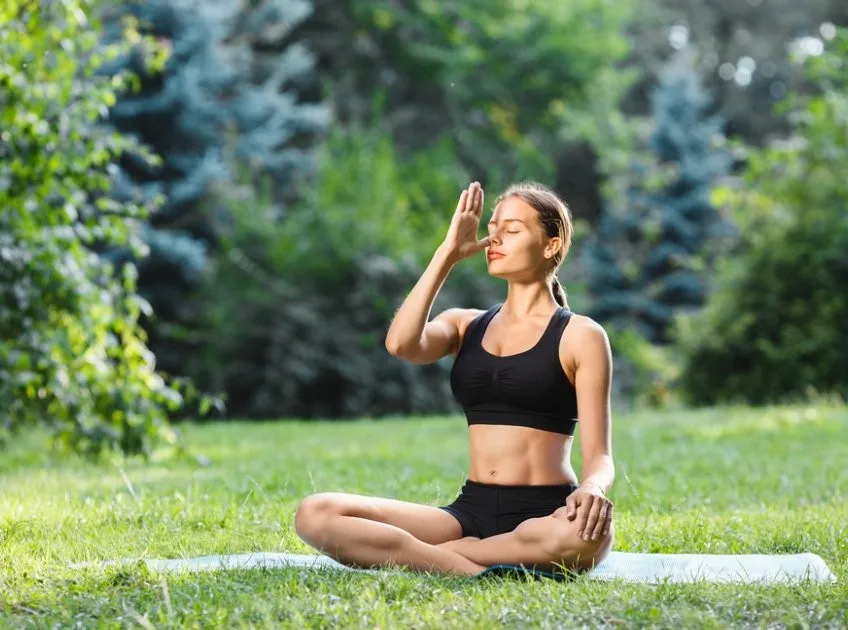
While yoga poses (asanas) are powerful, the integration of mindfulness and meditation brings depth to your practice, enhancing its transformative power. Spending time in meditation each day can help clarify your thoughts, reduce stress, and foster a sense of peace that permeates all aspects of your life.
- Guided Meditation: Start with guided sessions to help focus your mind and ease into the practice.
- Mindful Breathing: Simple techniques like the 4-7-8 breath can be performed anywhere, anytime to bring instant calm.
The Role of Yoga Workshops and Retreats
For those who are ready to dive deeper, participating in yoga workshops and retreats can be game changers. These are opportunities to immerse yourself in learning, surrounded by supportive instructors and fellow yogis. Workshops often focus on specific aspects of yoga, such as mastering a particular pose, learning advanced sequences, or deepening meditation practices.
Embracing the Community: Yoga Classes and Groups
Finally, while personal practice is crucial, joining a yoga class or group can amplify your efforts. The community aspect of yoga is incredibly supportive. Group classes provide motivation, shared energy, and a wealth of collective wisdom. Plus, the accountability factor helps keep your practice regular and introduces a social element to your transformation journey.
Embarking on this path with key yoga practices helps not only in achieving a more flexible body but in cultivating a resilient, peaceful mind, and a vibrantly healthy life. Whether at home with a video tutorial, in a bustling class, or on a quiet retreat, each yoga practice is a step toward unveiling the very best version of yourself. Ready to stretch into your new reality? Let’s make it happen, one breath, one stretch, one moment at a time.
Overcoming Common Obstacles in Yoga
Tackling Physical Limitations
One of the most common hurdles for newcomers to yoga is the misconception that you need to be inherently flexible or fit. This couldn’t be further from the truth! Yoga is for every body type, and modifications can help you make each pose your own. For instance, if touching your toes seems like a distant dream, using a yoga strap or bending your knees can make forward bends more accessible while still providing the stretch and benefits you’re after.
Mind Over Matter: Pushing Through Mental Blocks
Mental barriers can be just as daunting as physical ones in yoga. Many beginners feel discouraged by their perceived inadequacies or slow progress. Remember, yoga is not a competition—it’s a personal journey. It’s important to embrace where you are in your practice and not compare yourself to others. Celebrate small victories, like holding a pose a little longer or feeling more relaxed during meditation. Over time, this positive reinforcement builds mental resilience and a more profound appreciation for your capabilities.
The Challenge of Consistency
Establishing and maintaining a regular yoga practice can be challenging, especially with busy schedules. To overcome this, integrate yoga into your daily routine in manageable ways. Even ten minutes of morning stretches or breathing exercises can have significant benefits. Additionally, setting realistic goals, such as attending two to three classes per week or doing a short home practice on busy days, can help maintain momentum without feeling overwhelmed.
Dealing with Plateaus
Every yogi encounters plateaus, where progress seems to stall. This is a natural part of any learning curve. When this happens, it might be time to shake up your routine. Trying a new style of yoga, such as switching from Hatha to Vinyasa, or adding new poses and sequences can reinvigorate your practice. Attending workshops or private sessions might also provide new insights and techniques to enhance your experience.
Overcoming Social Anxiety
For some, the idea of joining a yoga class can be intimidating. Concerns about being judged or not fitting in can deter people from attending group sessions. Overcoming this starts with choosing the right environment. Look for beginner-friendly classes or studios known for their inclusive and welcoming atmosphere. Bringing a friend can also ease the initial anxiety, making the experience more enjoyable and less intimidating.
Navigating the Information Overload
In the age of information, beginners often find themselves overwhelmed by the myriad of yoga resources available. Start simple. Choose one or two trusted sources, such as a recommended yoga teacher or a well-reviewed app, and stick with them as you begin your journey. As you grow more comfortable and knowledgeable, you can start exploring additional resources and styles.
Yoga is a transformative practice that nurtures not only physical strength but also mental and emotional resilience. By recognizing and addressing these common obstacles, you can enhance your yoga journey, ensuring it is as rewarding and effective as possible. Each challenge overcome on the mat translates into greater confidence and capability off the mat, bringing you closer to the best version of yourself.
Yoga and Mindfulness: A Symbiotic Relationship
The Role of Meditation in Yoga
Yoga and meditation are like two peas in a pod; they complement each other perfectly, enhancing the benefits of both practices. Meditation, an integral part of yoga, isn’t just about sitting quietly—it’s an active training of the mind to increase awareness, and decrease emotional reactivity. Incorporating meditation into your yoga routine can deepen the sense of stillness and inner peace, making your practice even more effective.
In yoga, meditation often begins with focusing on the breath, which is a pivotal element of both practices. This focus brings a mindfulness aspect to yoga, where you become more aware of each movement and breath, allowing you to practice with intention and attention. For instance, during a Vinyasa flow, consciously connecting your movements with your inhalations and exhalations can turn a simple exercise into a moving meditation, enhancing both your physical and mental health.
Breathing Techniques: The Foundation of Practice
Breathwork, or Pranayama, is another cornerstone of yoga that embodies the link between yoga and mindfulness. These techniques are designed to control the breath to invigorate the body, calm the mind, and regulate energy levels. Practices like Ujjayi breath (oceanic breath), for example, are used during yoga to maintain a rhythmic, steady breath that supports staying present and mindful during the practice.
Pranayama techniques can vary greatly, each serving different purposes:
- Kapalabhati (Skull Shining Breath) is energizing, cleansing, and invigorating.
- Nadi Shodhana (Alternate Nostril Breathing) is calming, soothing, and balancing.
Incorporating these practices into your daily routine can significantly boost your mental clarity and reduce stress, benefiting your overall wellbeing.
Integrating Mindfulness into Daily Life
The principles of mindfulness learned on the yoga mat can seamlessly extend into everyday life, enhancing how you interact with yourself and others. For example, the mindfulness cultivated during yoga can help you become more patient and thoughtful, improve your concentration, and react more calmly in stressful situations.
Take a simple activity like eating. By eating mindfully—paying full attention to the taste, texture, and sensations of your food—you can transform a routine activity into an opportunity for mindfulness practice, which can help with digestion and satisfaction with meals.
Yoga as a Reflective Practice
Finally, yoga offers a reflective space to explore the mind-body connection. It encourages you to pause and reflect on your state of being, your actions, and your reactions, both on and off the mat. This reflective practice can lead to profound insights about your habits, your responses to challenges, and your interactions with others.
The Community Aspect of Mindful Practice
Sharing a yoga practice with a community or in a class can amplify these mindfulness benefits. Practicing with others can deepen your sense of connectedness and belonging, providing a collective energy that supports everyone’s individual journey.
In essence, the symbiotic relationship between yoga and mindfulness offers a comprehensive approach to wellness that nurtures not just the body but also the mind and spirit. As you continue to explore and deepen these practices, you’ll likely find a greater sense of peace and fulfillment in all areas of your life, powered by a mindful presence that yoga helps cultivate.
Equip Yourself: What You Need to Start Yoga
Embarking on a yoga journey is exciting, and having the right equipment can make your practice more comfortable and effective. Here’s a guide to the essentials you’ll need to begin your path towards a healthier, happier you.
Choosing the Right Yoga Gear
- Yoga Mat: This is your foundational tool. A good yoga mat provides the grip needed to hold poses and the cushioning necessary to protect your joints. Look for mats with good reviews on durability and comfort. If you’re eco-conscious, there are plenty of sustainable options made from materials like natural rubber or jute.
- Yoga Blocks: Especially helpful for beginners, yoga blocks assist with flexibility and help maintain proper alignment. They can be used to modify poses to suit your level of flexibility.
- Yoga Strap: Like blocks, a strap can help you reach limbs that are just a bit too far away and maintain poses longer without straining. They’re excellent for stretching and improving flexibility over time.
- Comfortable Clothing: Opt for breathable, flexible clothing that allows you to move freely. Clothes that are too loose can get in the way of some poses, while overly tight garments may restrict movement.
- Water Bottle: Hydration is key, especially if you’re venturing into more vigorous styles like Vinyasa or Bikram yoga. Keep water nearby to ensure you stay hydrated throughout your practice.
Finding the Right Class and Instructor
The right yoga class and instructor are crucial for a rewarding yoga experience. Here’s how to choose:
- Research Styles: Yoga comes in many styles, from the slow and gentle Hatha to the intense and fast-paced Ashtanga. Research which style might suit your physical needs and personality best.
- Check Credentials: Look for instructors with certified training recognized by yoga associations. Experienced instructors will be able to provide modifications and ensure you are practicing safely.
- Try Different Classes: Most studios offer introductory classes or trial passes. Use these to try out different instructors and class styles to see what resonates with you.
- Ask About Class Size: Smaller classes tend to offer more personalized attention, which can be beneficial when you’re starting out.
Creating a Conducive Environment
Whether you’re attending a studio or practicing at home, the environment can significantly affect your yoga experience. If you’re setting up a space at home, consider the following:
- Quiet Space: Choose a quiet, uncluttered area in your home where interruptions are minimized.
- Ambience: Natural light and a comfortable room temperature can enhance your practice. Consider soft lighting and perhaps an essential oil diffuser to create a calming atmosphere.
- Digital Tools: There are numerous apps and online resources that can guide your practice. From guided sessions to full classes, digital tools can help you maintain consistency, especially when you can’t get to a studio.
Arming yourself with the right tools and knowledge can kickstart your yoga journey and help you get the most out of every session. Whether you’re stretching into your first Downward Dog or perfecting your Warrior Pose, having the right setup will support your journey to the ‘New You.’
Embracing the Lifestyle: Yoga Beyond the Mat
Integrating Yoga Principles in Daily Life
Yoga is more than just a series of poses done on a mat; it’s a way of life. The principles you learn through yoga—such as mindfulness, balance, and harmony—can profoundly influence your daily activities and interactions. For instance, the patience and focus gained during a challenging yoga session can help you handle stress at work or manage family dynamics more gracefully.
Yoga and Diet: Nourishing the New You

The food you eat also plays a crucial role in your yoga journey. A diet that complements your yoga practice can enhance your physical health and your spiritual growth. Many yogis find that a plant-based diet rich in whole foods not only supports their physical practice but also fosters a greater sense of inner peace and connection with the environment. Consider incorporating more organic fruits, vegetables, and whole grains into your diet to keep your body energized and your mind clear.
- Check out Ayurveda healthy eating for beginning a plant-based diet rich foods in your daily diet.
Sustainable Practices: Yoga’s Ethical Precepts
Yoga encourages living with awareness and respect for all living things, which naturally leads to more sustainable lifestyle choices. This could mean reducing waste, choosing eco-friendly products, or even volunteering your time for community service. Each of these actions can be an extension of the yogic principle of “Ahimsa,” or non-violence.
Continuous Learning and Growth
The journey of yoga is one of continual learning and personal development. Whether it’s deepening your practice through advanced classes and retreats, or expanding your knowledge with books and seminars, there’s always more to explore. Yoga teaches us that every end is just a new beginning.
Ready for Best Version of Yourself?
So, are you ready to meet the best version of yourself through yoga? Remember, this isn’t just about improving your flexibility or learning to stand on one leg. It’s about transforming your life, embracing peace, and cultivating happiness from within. It’s about the joyous liberation that comes when you truly connect with yourself on a deeper level.
As you continue your yoga journey, allow the principles you learn to seep into every aspect of your life. Yoga isn’t just performed; it’s lived. As you stretch, grow, and breathe through your practice, you’ll find that yoga’s greatest gift is its ability to reshape not just your body, but your entire life.
So, unroll your mat, breathe deep, and take the first step towards a new, enlightened path. Your journey to a fuller, healthier, more harmonious life awaits. Namaste.

